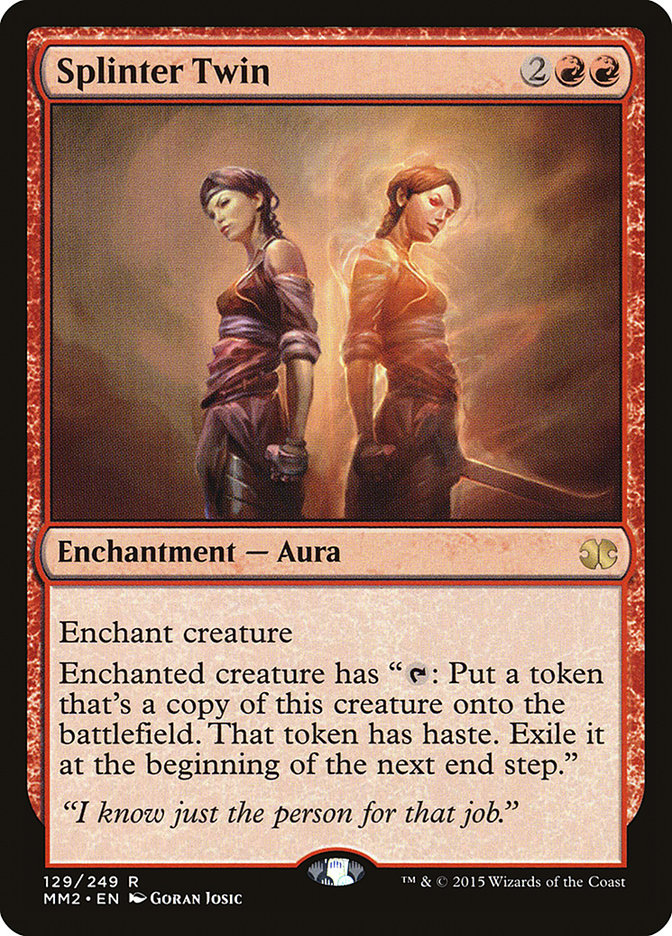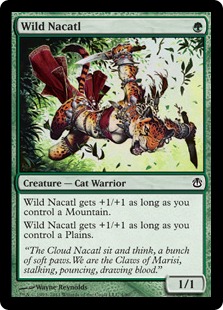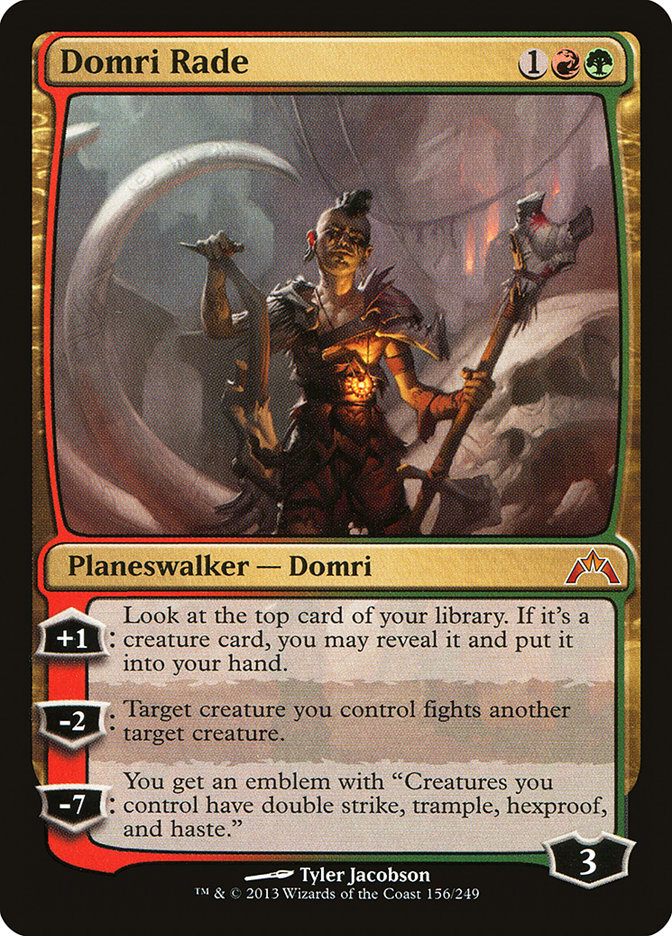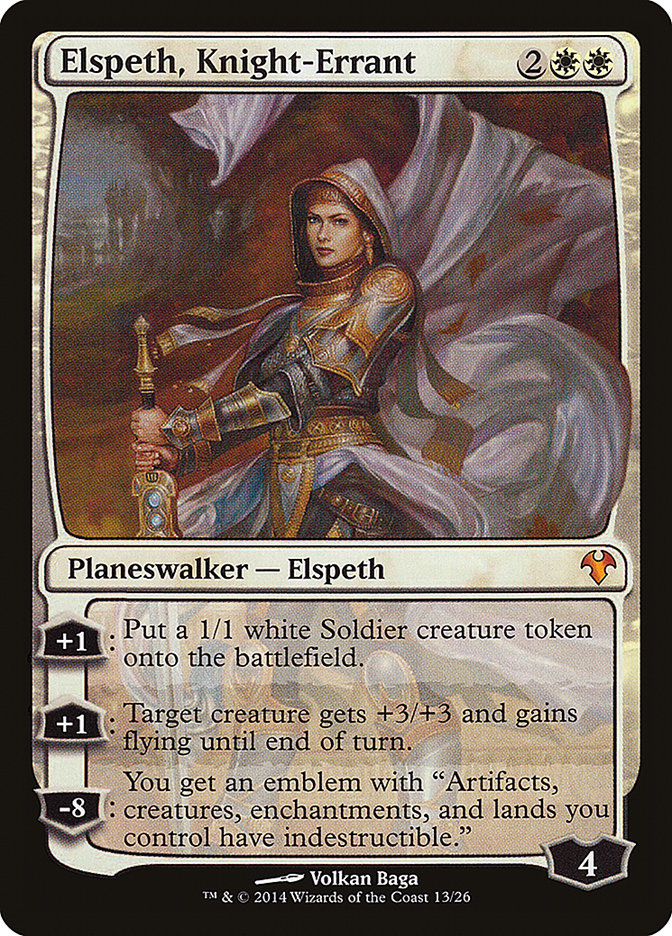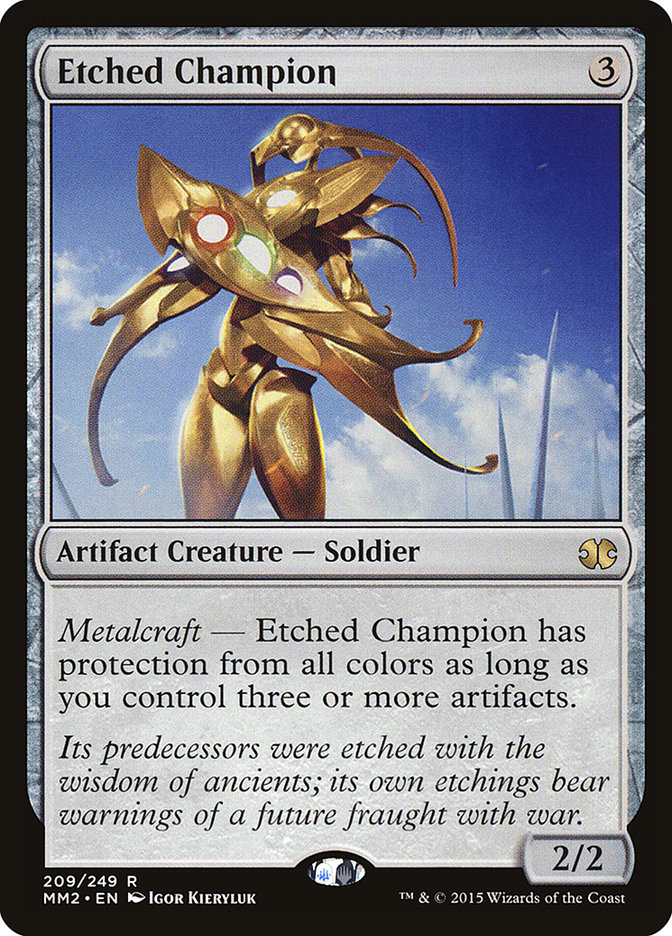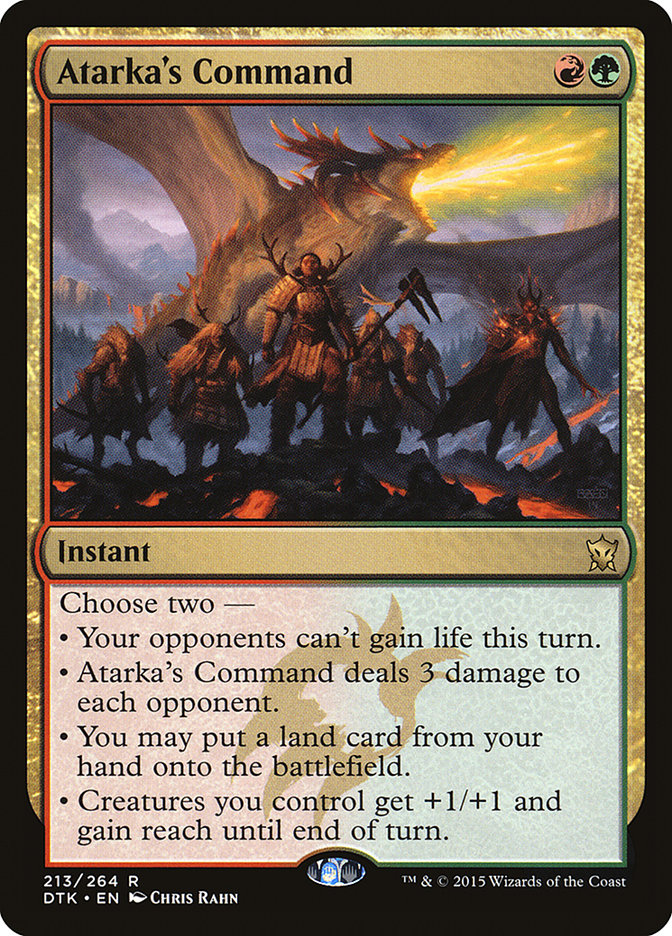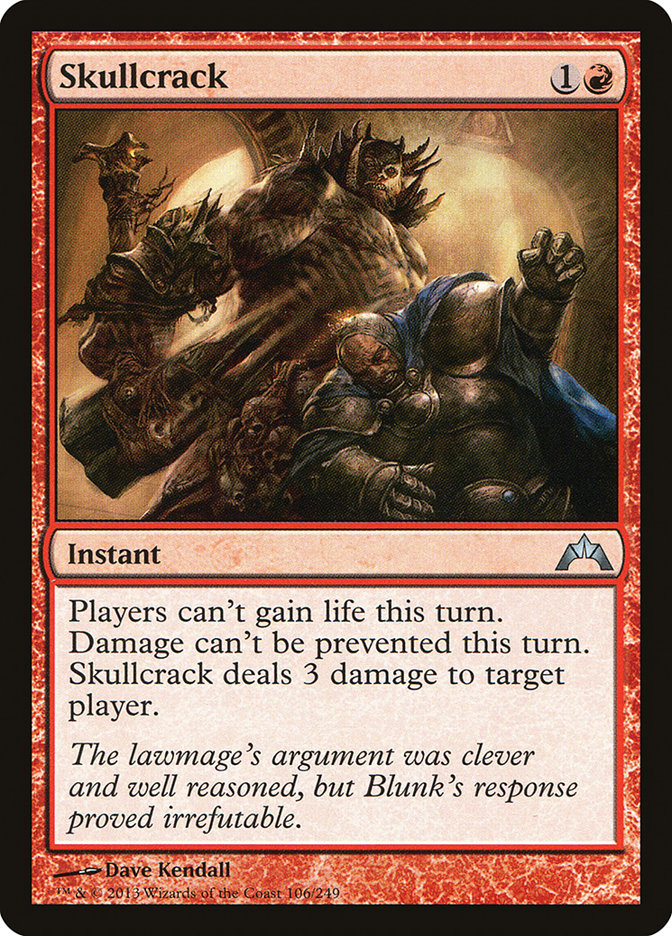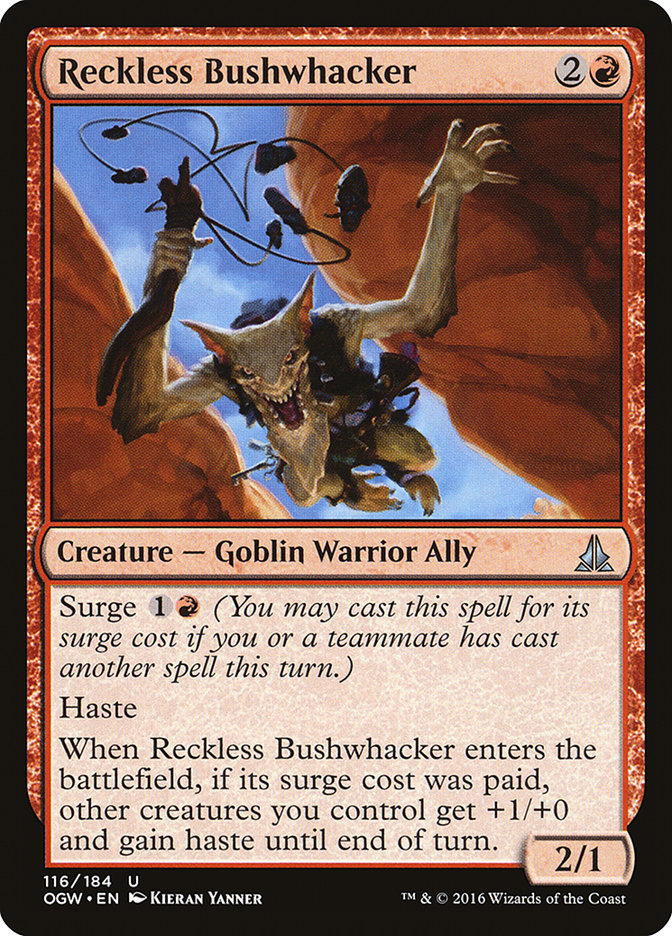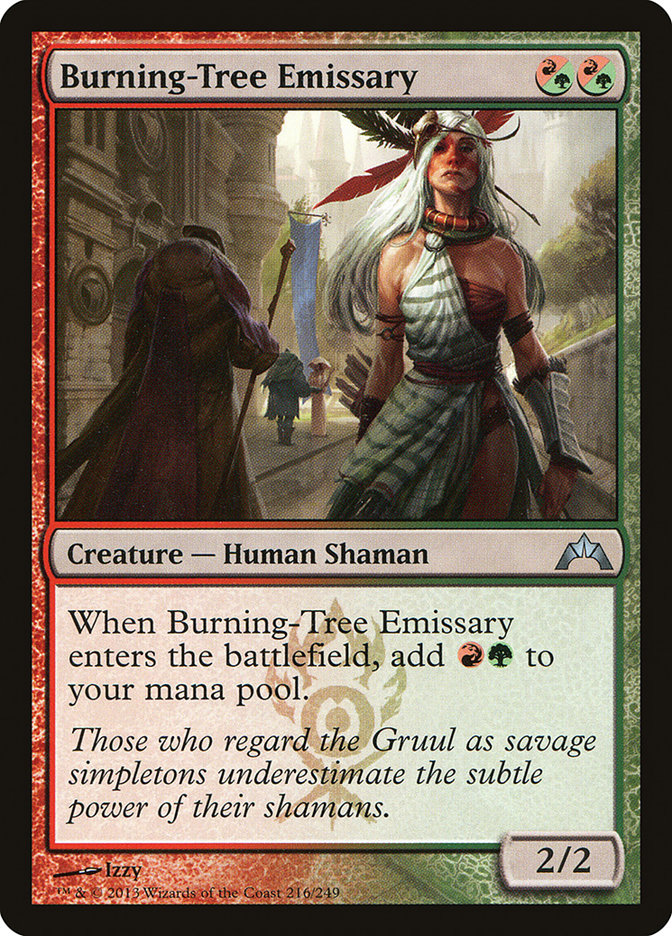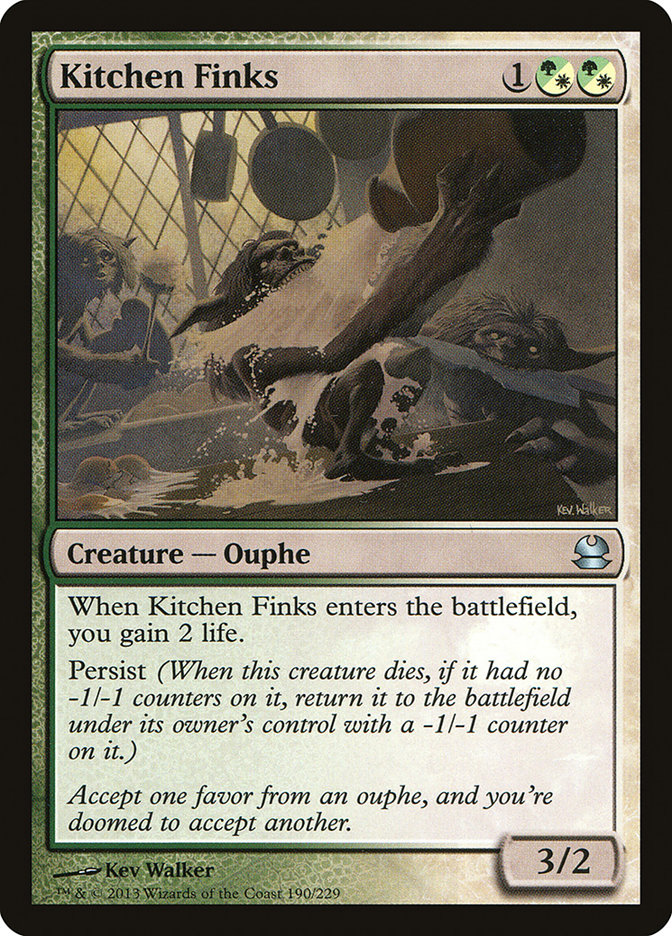The dominance of Eldrazi in Modern this winter completely overshadowed the bannings of Splinter Twin and Summer Bloom, rendering what effect they may have had on the format irrelevant. With the Eldrazi somewhat contained for the moment, we have finally seen the ripple effect of banning the format’s premier combo deck and a deck that has been a format staple since its inception.
One of the major worries caused by the Splinter Twin ban was that it would unleash a torrent of fast combo decks on the format, unchecked by the format’s most popular blue deck, which had the ability to use its counterspells to disrupt the combo decks early and then quickly close the door with a combo finish of its own. While Splinter Twin had long been a major shaper of the format, in this way it was viewed as a key check on the power of the many linear combo decks in Modern because its answers were so versatile and the threat of its own combo so strong.
However, it appears that aggro, not fast combo, is the big winner from the Splinter Twin banning.
Wild Nacatl was unbanned two years ago and made little impact in the immediate wake of its return, which made its initial ban look like an overreach. But now we have seen Wild Nacatl become a format staple as various flavors of Zoo decks are becoming more popular, as well as a Naya variant of Burn that incorporates Wild Nacatl as an additional cheap threat.
We are then left with the question of why this shift has happened, and what that means for Modern looking forward to #SCGINDY and #GPCharlotte. Can the resurgence of Wild Nacatl be solely attributed to the removal of Splinter Twin and Summer Bloom from the format? If so, why? If not, what are the other contributing factors to this shift?
The Splinter Twin Ban
As I said above, there was much chatter about Twin being the combo police in Modern, keeping degenerate decks in check, but as anyone who regularly played Twin will tell you, at its end the deck was more of a FalseTempo deck than a Combo deck, often playing long games and using the threat of its combo to constantly keep its opponent off-balance and create favorable exchanges. The hallmark of the deck was its versatility, and that versatility came from two cards: Lightning Bolt and Snapcaster Mage.
Lightning Bolt and Snapcaster formed the true engine of Splinter Twin, since they both can play so many different roles. Lightning Bolt can be a functional removal spell at nearly any stage of the game, often gaining you tempo since it only costs one mana, but it can also serve as a reach spell when your opponent plays too scared against the combo and takes too much incidental damage from Deceiver Exarchs and the like. Snapcaster Mage helps you find extra copies of whatever spell you need, often gaining card advantage as you navigate to a position where the 2/1 body is relevant.
More importantly, this combination of cards was a nightmare for Wild Nacatl decks. U/R Twin had enough basic lands that it rarely took a lot of damage from its manabase, and being able to answer the best one-drop available to Zoo at parity and always have extra copies in reserve for the later turns with Snapcaster Mage was too much.
You could try to side into some more powerful threats, maybe planeswalkers like Domri Rade or Elspeth, Knight-Errant, but tapping out for any of those left you vulnerable to the combo, and even if you were not dead on the spot, any number of small advantages you accrue can be undone if they merely make their land drops and set up a combo kill with a protection spell or two for your minimal disruption.
Even if you found them without a LIghtning Bolt, Deceiver Exarch, normally a low-impact card, was a perfect defensive creature for the matchup, often teaming up with a Snapcaster Mage to trade for a Wild Nacatl or Kird Ape. Zoo’s strategy was not good against Twin’s, and its individual cards also lined up poorly. Without serious dedication, this was not going to be a good matchup, and in a format as large as Modern, that dedication was too high a price to pay.
Contrast this to the format’s top aggro deck, Affinity, and we can see why Zoo was not very popular or successful before this year. Affinity is more explosive than Zoo, sometimes being able to outpace even the cheap Lightning Bolt or forcing the Twin player to assemble the combo quickly by playing through its early disruption effectively.
It also had access to a reach spell, Galvanic Blast, which could disrupt the Twin combo regardless of which creature they drew, along with a great hate card, Spellskite, which both naturally fits the archetype and neuters opposing Lightning Bolts in a fair game of magic. Despite these tools, Affinity was still behind in the matchup, but not by much, and it got that far without specifically dedicating any cards to beating Twin, so there was room for improvement if you felt it important enough.
Looking past Twin, the removal of Summer Bloom is clearly a boon to aggro, since the deck was faster and Zoo had no reasonable disruption. Since Amulet Bloom was criminally underplayed given its power level, this change was not as relevant but still important, because Zoo should have fallen victim to the combo decks in the format.
The problem is that none of the other combo decks are fast or consistent enough to compete in the format. The aggro decks in Modern kill consistently on turn 4, and if you have a single piece of disruption or the combo deck stumbles, you are certainly a favorite. It may seem bad when you cannot beat your opponent’s best draws, but if they don’t come up often enough, you will be fine. It’s just a matter of not succumbing to the fear. If a combo deck similar in power to Amulet Bloom emerges, that will certainly be bad for Wild Nacatl and friends, but for now they are thriving.
New Additions
But the removal of its predators is not the only boon to Zoo. It has gained some key additions in recent sets that moved the needle enough to turn it from fringe strategy to contender. The first of these additions was Atarka’s Command. The powerful burn spell is perfect for a rush aggro deck looking to supplement its creatures with reach and has become a staple of the archetype. While I have arguedagainstitsinclusioninBurn, I acknowledge its pivotal role in the resurgence of Zoo. It has the potential to act as a five- or six-point burn spell for two mana, a rate that is utterly absurd and allows the Zoo deck to have more turn 3 kills, further improving their matchup against combo and putting more pressure on other decks to interact and interact well on the first three turns of the game.
Atarka’s Command also gives Zoo some needed versatility. A Skullcrack effect is too narrow to play by itself in a creature-oriented deck like Zoo, but it is an effect you would love to have access to in some scenarios.
Having that functionality stapled onto a card you want to play in large numbers regardless is a subtle addition to the deck that gives you a few percentage points here and there, but those percentage points eventually add up to significantly alter the deck’s position in the format.
Every deck in Modern leverages cards that are incredibly powerful, cards that can end a game where no other card can. Atarka’s Command is that card for Zoo, giving the deck an explosiveness that it lacked before, especially in comparison to Affinity.
The second addition to the deck came more recently with Oath of the Gatewatch and also increased the deck’s explosiveness: Reckless Bushwhacker. In combination with Burning-Tree Emissary, Bushwhacker lets you create a huge battlefield presence as early as turn 2 while also getting in nine or more damage. You can also have sequences like the following quite regularly:
Turn 1: Wild Nacatl.
Turn 2: Burning-Tree Emissary, Goblin Guide, attack for five.
Turn 3: Lightning Bolt or Path to Exile a blocker, Reckless Bushwhacker, attack for twelve.
Your opponent failed to interact on turn 1 and is now at life facing down four creatures! This is certainly a great draw, but not an unrealistic one. If your opponent is playing a non-interactive combo deck, then that Lightning Bolt can go upstairs and end the game on the spot.
The best part about the Bushwhacker-Emissary combo is that it plays perfectly with Atarka’s Command. In fact, Command represents one more damage in the above scenario if you cast it over Bushwhacker. It can also be the last three damage if your opponent untaps with an Anger of the Gods for your creatures.
As a swarming aggro deck, you now have a critical mass of cheap creatures to flood the battlefield with and a number of payoffs for playing low-impact cards like Kird Ape. The power level of the deck has been ratcheted up to the level of the other decks in the format without hurting its consistency, which is a huge part of its appeal.
It is important to note that Reckless Bushwhacker is not the only way to go with Zoo, as evidenced by Jameson Perdue‘s list from the last Invitational that uses Eidolon of the Great Revel and more burn spells as opposed to Tarmogoyf and Bushwhacker. It is clearly further toward the Burn end of the spectrum, as Eidolon was really the card that brought Burn to the forefront of Modern, but it is still leveraging the power of Atarka’s Command. That there are several successful Wild Nacatl variants in the format speaks to the renewed power of the deck, and suggests that its resurgence is more than just a passing fad.
What Zoo Means for Modern Going Forward
Assuming that nothing drastic changes to diminish Zoo’s standing in Modern, what can we expect its emergence to do to the Modern metagame? The first is one we have already seen and it is the rise of Kitchen Finks. Abzan Company has been the best-performing deck in the format in recent weeks and that is in no small part due to its excellent Zoo matchup.
A more dedicated burn deck can win through the two life gained, especially when on the play where your creatures can deal a sufficient amount of damage before it comes online, but Zoo is dependent on attacking, which means that, if you do not have a Path to Exile, the Finks is likely to trade for two creatures and gain four life, a rate that is very difficult to overcome. As long as Abzan Company is around, Path is a necessary evil if you are playing Kird Ape.
The other, less intuitive effect has been a decline in Affinity. This is not necessarily because Affinity is poor against Zoo, but because Affinity has been bolstered by the fact that it has existed as the clear best aggro deck in the format for so long.
Since Modern is a non-rotating format, it allows players to grow attached to a certain archetype, and players that identify as aggro pilots have until now found their options lacking. In order to be consistently competitive, they had to choose Affinity. That is no longer the case, and with more options, the metagame share for Affinity was bound to drop. Now, I do not expect it to drop as much as it did in the Invitational, especially if its recent lack of results cause a decrease in hate for the deck, but it will not completely rebound, even if it also benefited from the Twin ban.
Wild Nacatl has given Modern some much-needed diversity for devoted aggro players, and the recent results for the format are incredibly varied. Whether or not Ancestral Vision or Thopter Foundry can break through in a meaningful way will be important to watch in the coming weeks, as we have had enough time for players working with those cards to refine and tune their lists, but for now I am happy just getting people dead.


